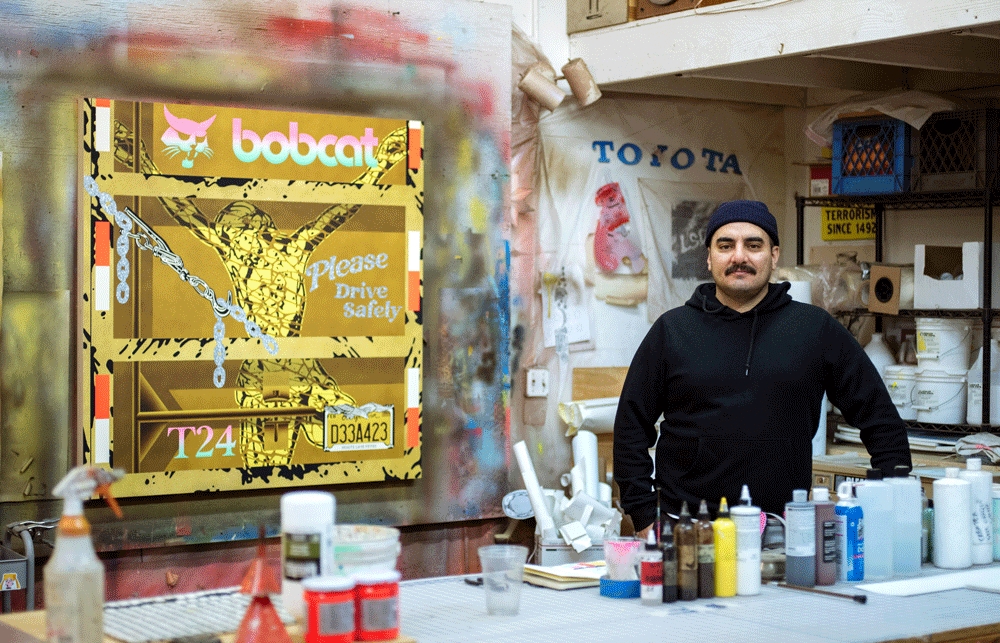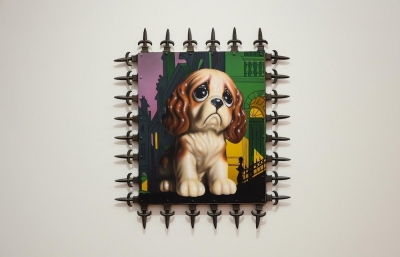Each artist also speaks about the dynamics of movement within labor and the working class when they are making work about LA. Patrick Martinez remarked that LA "feels that it's still in process, or kind of like it has not yet arrived." I wondered what you feel about that sort of movement, and if you think that perhaps because labor feels unstable is that it is often moving around LA? I always think of LA artists as trying to freeze frame instability.
I’ve never thought of myself as an artist who makes work about LA, although one of the central focuses in my work is commodity labor, and that theme definitely has a place in LA or any city wherever industry and labor exist. I do believe that this feeling of instability within labor is due to the constant conflict that working people face daily just to survive.
Considering that such a powerful list like Barbara Kruger, Lari Pittman, and Rodney McMillian, for example, taught at UCLA, I imagine that studying there must have been very enriching. What was that experience like? It feels like conceptually, it was a good place to be. And, SoCal was still home, so you had the opportunity to study in your own backyard.
It was very challenging at first because I was commuting all the way from Pomona and felt like it interfered with the quality of my education. I didn't want to get more into debt by getting loans to live on or near campus, so I took it as a sacrifice and commuted. I ended up spending more time commuting than on campus, and by the time I made it home I was exhausted. I realized I was not going to last if I continued commuting, so after the first quarter I started camping out of my truck and that was a lot better. Since students have 24-hour access to the campus studios. I spent the majority of my time in the studio studying for tests and doing homework. I was also able to participate in school activities more so it was nice being active in that way.
UCLA’s art program is conceptually focused and I wanted to go there because I felt a desire to expand my capacity to conceptualize my ideas. I think the program really pushed me in that direction and exposed me to deeper ways of examining life and my work. It helped shape my confidence in my perspective and enhanced my ability to express and discuss my ideas. At the same time, it also exposed the blindspots of the institution, and the limitations of the art canon. I would find myself in many debates between formalist ideas and ideas that subverted those standards.
I loved getting to work with Lari Pitman, Jennifer Bolande, and Patty Wickman. They all influenced me greatly. I started exploring mixed media deeply in my painting with Lari. For New Genres, I had Jennifer, who greatly influenced my video and photography practice. I had Patty for drawing, and I would say she's the reason I’ve continued to make drawings. I also took a lot of Chicano Studies classes during my time at UCLA, where Alma Lopez and Alicia Gaspar De Alba both inspired and influenced me greatly. Lastly, there was a Working Class history class that I took with Frank T. Higbie, and I would probably say his class had the most impact on me. In his class I learned a lot about the unresolved conflicts that working class people face, thus raising the paradoxical question, can industry and democracy coexist? That is a question that I continue to explore today.












